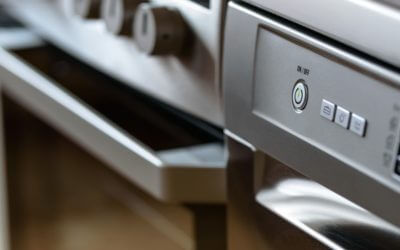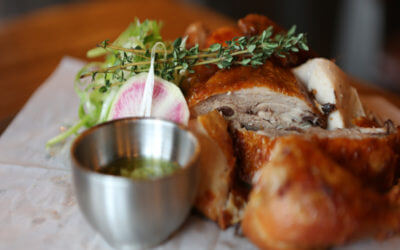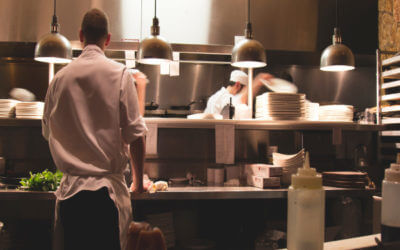Essentials of Cleaning and Preventative Maintenance for Your Restaurant Equipment
July 8, 2017When it comes to your restaurant equipment, regular cleaning and maintenance is essential for making sure your equipment lasts for years to come. And it isn’t simply a matter of making your food processors and commercial mixers more efficient.
There are considerable short-term and long-term savings involved in having restaurant equipment that performs optimally and lasts longer. Keeping your restaurant equipment cleaned and maintained, particularly through preventative maintenance measures, means keeping several things in mind.
There are obviously several benefits to cleaning and preventative maintenance. Performed on a regular basis, light cleaning can save you the task of doing a massive, time-consuming cleaning later on. Regular care can also ensure you don’t have to spend as much on equipment replacements and repairs.
Here are some simple general cleaning and preventative maintenance tips that you will want to keep in mind:
Basic Cleaning Tips
1. Consult the operating manual. In this article, we will outline general tips that can work for most of the products found in your restaurant kitchen. However, we strongly suggest consulting the specific operating manuals for your food processors, commercial mixers, and other items.
2. Unplug it. Make sure everything has been unplugged, prior to any cleaning or maintenance you plan to do. This sounds like common sense, but it’s something it is still sometimes forgotten.
3. Protect glass surfaces. Under no circumstances should you use scrubbing pads on your glass surfaces.
4. Wipe only. Never use spraying, hosing, or power washing tools on any of your electric restaurant equipment.
5. Cleaning surfaces. For your contact surfaces, you’re going to want to make sure you wash, rinse, and sanitize everything with soft cloths, soaps, water, and a sanitizing solution that has been proven to work effectively. Tabletops, feed tables, buttons, or any of the handles in your space are a few examples.
When it comes to preventative maintenance tips, you’re going to want to keep some more specific suggestions in mind.
The First Step for Preventative Maintenance
One of the first things you can do for preventative maintenance is to take inventory. If you have a small facility, you can put everything on a single master list. If your restaurant is larger, it might be wise to break everything down by section.
Restaurant equipment names, locations, serial numbers, descriptions, maintenance schedule, responsibilities, and procedures can all be included on such an inventory. This is a good way to keep track of things, which can become particularly essential with your larger kitchens.
Remember that different products have different schedules for maintenance, and this can become increasingly difficult to manage as the size of the kitchen increases.
Developing your inventory allows you to build schedules, procedures, and responsibilities. Establishing protocols for cleaning and maintenance will make things easier for everybody and help ensure every piece of restaurant equipment is taken care of.
What’s in a Cooking Pot, How to Choose the Right One?
As a restaurant owner, your cooking needs might vary. Did you know that a good quality pot can greatly improve your cooking experience, while also improving the quality of your cooking? This cooking equipment is a very important one that cannot be done away with...
5 Things Every Restaurant Owner Should Do Before Buying Used Kitchen Equipment
Equipping your restaurant properly can cost a lot of money, so buying used kitchen equipment is the go-to choice for many restaurateurs. Buying used kitchen equipment for a restaurant is a bit different than buying used equipment for your home, however. You will...
Top Restaurant Technology Trends in 2018
When looking to buy restaurant supplies, you want to be on the leading edge of technology trends. This will keep your kitchen running smoothly. Let’s take a look at some of the most recent trends in restaurant supplies technology. 1. New Payment Options Who would...
5 Different Ice Shapes and Why You Should Care About Them
Ice makers are very popular in the restaurant and foodservice community because they eliminate the need to buy ice every day. And of course, adding an ice maker to your collection of foodservice equipment means you will always have ice on hand when you need it. An...
Pulping and Grinding: A Starter’s Guide to Reducing Commercial Food Waste Costs
For most restaurant owners and managers, the expenses involved in making meals are always under careful consideration. Water is needed to prepare, cook and wash food; power is necessary for food prep, cooking and cooling, and so on. However, how many of us consider...
Choosing the Right Milk Cooler: Cold Wall or Forced Air?
In a restaurant, milk is an essential to have on hand for coffee and other café-style beverages, for serving with kids’ meals, and as a key ingredient in many recipes. Keeping your milk properly chilled can be difficult without the proper restaurant equipment....
How to Choose Your Next Commercial Meat Smoker
The movies that connect with us on a personal level are the ones that linger in our memories forever. Anyone who has used a commercial meat smoker knows that they have a huge influence on the taste of a meal. You need to have just the right kitchen equipment to get a...
Are High Speed Ovens Too Good to be True?
You might have heard a few of the bold claims that foodservice equipment manufacturers have been making about high speed ovens, but they can’t be possible, right? Cooking three times as faster as regular ovens? Five times as fast? Fifteen times as fast? It may seem...
Choosing the Right Food Storage Containers for Your Restaurant
Choosing the right kitchen supplies will make a difference in your restaurant. Whether it is heavy duty kitchen equipment or food storage containers, each piece of equipment plays its own important role. Today, we are going to talk about how to choose the right food...
Tipton’s Guide to Perfect Poultry Trussing
Do you ever truss birds in your commercial kitchen? Trussing is a fantastic cooking technique because it makes poultry cook faster, look more attractive and taste better. If your commercial kitchen prepares poultry, you don’t want to miss these trussing tips. Trussing...
How to Eliminate Excess Condensation in Your Kitchen
Is your commercial kitchen getting steamy? If so, you could have more than just an uncomfortable working environment on your hands. Excess moisture in your commercial kitchen can result in the corrosion of equipment, the development of mold, and even damage to your...
The DIY Guide to Your Restaurant’s Own Garden
Stocking your restaurant supply with your own home-grown herbs and produce can truly bring your dishes to life. When it comes to food, everyone knows there’s nothing like homemade and home-grown. Having your own culinary garden, however large or small, can help you...
5 Reasons a Meat Grinder Will Set Your Burgers Apart
The more you do to prepare your foods in-house with the right kitchen equipment, the fresher and more flavorful your dishes become. There are all sorts of restaurants offering fast-food style burgers, but some diners are looking for the real deal. A fresh, juicy...
Pest Preventions to Implement in Your Commercial Kitchen
Restaurant pests: it’s something that few people want to think about. Like it or not, pest management is an essential consideration for every commercial kitchen. Offering food, shelter and water, the unprepared commercial kitchen naturally provides everything pests...
Choosing the Right Material for Your Cooking Equipment
Kitchens are very unique to their chef. Just like a car mechanic has a toolbox unique to them, so is the cooking equipment in a kitchen. And over time, the same cooking equipment become a natural extension of the chef. What tools are you using in your kitchen? It...















